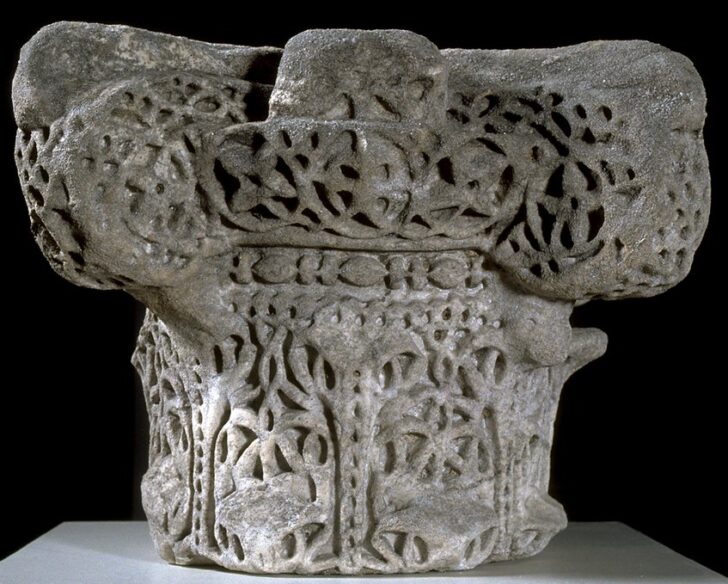Capital from the palace-city of Medinat al-Zahara with stylized acanthus leaves, vine rinceau and fleurons
Spanish

Description
March 28, 2009
Carved with consummate skill, this capital reflects the splendor and sophistication of Islamic Spain, known as Al-Andalus, under the rule of the Umayyad dynasty (711–1031). The capital comes from Medina Azahara, a vast palace-city built near Cordova to serve the needs and cultivated protocols of the Umayyad court and to demonstrate the supremacy of the Umayyads over their rival dynasties, the Abbasids in Baghdad and the Fatimids in Cairo. Although Medina Azahara was destroyed in 1010, archaeological evidence suggests that this capital came from the magnificent audience hall known as the Salon Rico, near the heart of the palace complex, where the Umayyad caliphs would receive visiting dignitaries. The intricate pattern of leaves and vines on this capital hints at the breathtaking and majestic hall that would have impressed visitors as they entered the presence of the caliph.
Subject Matter:
This capital comes from Medinat al-Zahra, the vast palace-city begun in 936 CE near Cordova by ‘Abd al-Rahman II, the Islamic Umayyad ruler of Spain, where it probably adorned the sumptuous audience hall known as the Salon Rico. The majestic scale and splendor of the palace accommodated the needs and sophisticated protocols of the court, and boldly strengthened Umayyad claims to the status of caliph, or supreme civil and religious ruler of the Islamicate world. In this setting the elegant vegetal decoration of the capital both reflected the lush paradisiacal garden in which the Salon Rico was situated and reverberated with echoes of authority emanating from the Roman and Byzantine models from which the form of the capital derived, thereby contributing to the majesty of the Umayyad caliph.
Physical Description:
This capital, based upon the Roman composite order, features stylized acanthus leaves and rinceau on the bell of the capital, which terminates in a band of bead-and-reel motif on the astragal. This, in turn, is capped by an echinus decorated with three fleurons and vine rinceau on each face as well as four projecting volutes also decorated with rinceau and fleurons. Originally the bell of the capital had two tiers of acanthus leaves, but the capital has been cropped below the top of the first tier and the tips of the leaves, which once curved outward from the surface of the capital, have been sheared off.
Usage Rights:
If you are interested in using an image for a publication, please visit https://umma.umich.edu/request-image/ for more information and to fill out the online Image Rights and Reproductions Request Form.